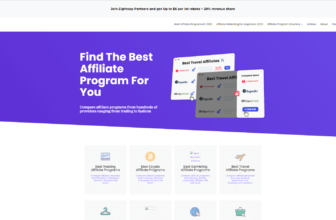
5 Powerful Strategies for Affiliate Marketers to Build Your Email List
Are you an affiliate marketer looking for ways to build your email list? Email marketing can help you boost your affiliate sales and revenue. With a good email list, you can promote your affiliate products to your subscribers and drive more conversions. In this guide, we’ll show you how to build an email list for your affiliate marketing business.
Build Your Email List: Why Building an Email List Is Important for Affiliate Marketers
Building an email list is a critical component of any successful affiliate marketing strategy. By having a targeted list of subscribers, you can reach your audience directly and promote products that are relevant to them. Here’s a closer look at why building an email list is important for affiliate marketers:
One of the main advantages of email marketing is its cost-effectiveness. Unlike other marketing channels, you don’t need to spend a lot of money to start building an email list. With affordable email marketing tools like Mailchimp, Constant Contact, or Aweber, you can start building your list without breaking the bank. This makes email marketing an excellent option for affiliate marketers who are just starting and may not have a large budget for advertising- perfect to help you build your email list.
Email Marketing Can Help You Build Trust with Your Audience
Email marketing is a powerful tool for building trust and credibility with your audience. By providing valuable content and offers to your subscribers, you can establish yourself as an authority in your niche. When your subscribers trust you, they’re more likely to open your emails, engage with your content, and ultimately make purchases based on your recommendations. This can help you build a loyal following of customers who value your opinion and are more likely to become repeat customers.
Email Marketing Can Boost Your Affiliate Sales and Revenue
Email marketing can drive more sales and revenue for your affiliate marketing business. According to a study by DMA, email marketing has an average ROI of $42 for every $1 spent. By promoting your affiliate products to your email list, you can drive more conversions and earn more commissions. By targeting your subscribers with personalised offers and promotions, you can increase the likelihood that they will make a purchase. This can ultimately result in higher revenue for your business.

How to Build an Email List for Your Affiliate Marketing Business
Building an email list is crucial for the success of an affiliate marketing business. In the previous section, we discussed why email marketing is important for affiliate marketers, and now let’s look at some strategies to help you build your email list.
1. Offer a Lead Magnet
A lead magnet is a valuable piece of content that you offer to your website visitors in exchange for their email address. It could be an e-book, a checklist, a cheat sheet, or any other content that solves a problem for your audience. The key is to create something that provides value and is relevant to your niche. When visitors see that you’re offering something valuable for free, they’re more likely to sign up for your email list which is a great way to build your email list.
2. Use Opt-In Forms on Your Website
Opt-in forms are forms that you place on your website to collect email addresses. You can use opt-in forms in different ways, such as pop-ups, slide-ins, or inline forms. Make sure your opt-in forms are visible and compelling enough to encourage your website visitors to sign up. You can also use lead magnets to encourage sign-ups on your opt-in forms. Place your opt-in forms in strategic locations, such as your homepage, blog posts, or landing pages, to maximise their visibility.
3. Run a Contest or Giveaway
Contests and giveaways are an effective way to build your email list quickly. You can run a contest or giveaway on your website or social media platforms and require participants to sign up with their email address. To ensure the success of your contest or giveaway, make sure you’re offering a prize that’s relevant to your niche and valuable to your audience.
4. Partner with Other Marketers
Partnering with other marketers can help you reach a wider audience and build your email list. You can collaborate with other affiliate marketers or influencers in your niche and offer a joint lead magnet or contest. This will help you tap into their audience and reach potential subscribers that you may not have been able to reach otherwise.
5. Use Paid Advertising
Paid advertising can be an effective way to drive traffic to your opt-in forms and build your email list. You can use Facebook ads, Google ads, or other advertising platforms to target your audience and promote your lead magnet or opt-in form. The key is to make sure that your ad copy and design are compelling enough to encourage clicks and sign-ups.
When it comes to building an email list for your affiliate marketing business, the key is to focus on providing value to your audience. Offer valuable content, collaborate with others in your niche, and use paid advertising to reach a wider audience. Remember, to build your email list it takes time and effort, but the rewards are well worth it in the end.
Best Practices for Email List Building
Email list building is a crucial aspect of any successful affiliate marketing business. However, it’s not enough to just have an email list; you need to follow best practices to ensure that your emails are effective and engaging. Here are some best practices for email list building:
1. Provide Value to Your Subscribers
The first and most important best practice for email list building is to provide value to your subscribers. Your subscribers have given you permission to email them, so it’s essential to send them content that they find helpful and interesting. This could include tips, advice, special offers, or exclusive content that they can’t find anywhere else. It’s important to strike a balance between promotional emails and emails that provide value without asking for anything in return.
2. Segment Your Email List
Segmenting your email list means dividing your subscribers into different groups based on their interests, behaviours, or preferences. By segmenting your list, you can send more targeted and relevant emails to your subscribers. For example, if you have subscribers who are interested in fitness, you can send them emails about workout tips or healthy recipes. By sending targeted emails, you’ll increase the likelihood of your subscribers engaging with your emails and taking action.
3. Personalise Your Emails
Personalising your emails means addressing your subscribers by their name and sending them content that’s relevant to their interests. Personalisation can help you build stronger relationships with your subscribers and increase the likelihood of them engaging with your emails. You can personalise your emails in different ways, such as using their name in the subject line or sending them product recommendations based on their past purchases.
4. Send Emails Consistently
Sending emails consistently is crucial to building a strong relationship with your subscribers. It’s important to establish a regular schedule for sending emails, whether it’s once a week or twice a month. By sending emails on a consistent schedule, you’ll build a habit of engagement with your subscribers, and they’ll be more likely to open and engage with your emails.
5. Test and Optimise Your Emails
Testing and optimising your emails means experimenting with different subject lines, email copy, and calls to action to see what works best for your audience. By constantly improving your emails, you can increase your open and click-through rates and drive more conversions. You can use A/B testing to compare different versions of your emails and see which one performs better. You can also track metrics like open rates, click-through rates, and conversion rates to measure the effectiveness of your emails.
Conclusion
Building an email list is a crucial step for any affiliate marketer who wants to boost their sales and revenue. By following the strategies and best practices outlined in this guide, you can start to build your email list for your affiliate marketing business and see the results in your bottom line.
FAQs
- What is a lead magnet, and how can I create one for my affiliate marketing business?
A lead magnet is an incentive that you offer to potential subscribers in exchange for their email address. Lead magnets can take many forms, such as e-books, checklists, webinars, and more. To create a lead magnet for your affiliate marketing business, think about what your target audience would find valuable and create a resource that provides that value.
- How do I choose the right email marketing tool to build my email list?
When choosing an email marketing tool for your affiliate marketing business, consider factors such as the tool’s features, ease of use, pricing, and integrations with other tools you use. Look for a tool that can handle your list size and provide you with the analytics and automation features you need to run effective campaigns.
- Can I promote multiple affiliate products to my email list, or should I focus on one product at a time?
You can promote multiple affiliate products to your email list, but it’s important to do so in a way that’s not overwhelming or spammy. One way to approach this is to segment your email list based on subscribers’ interests and send them targeted promotions for products they’re most likely to be interested in.
- What’s the best way to measure the success of my email marketing campaigns?
The best way to measure the success of your email marketing campaigns is to track key metrics such as open rates, click-through rates, conversion rates, and revenue generated. By analyzing these metrics, you can identify what’s working well and what can be improved in your campaigns.
- How often should I clean my email list and remove inactive subscribers?
It’s a good practice to clean your email list regularly and remove inactive subscribers. How often you do this will depend on the size of your list and your engagement rates. As a general rule, consider removing subscribers who haven’t opened or clicked on any of your emails in the last 6-12 months. This will help keep your list healthy and improve your overall email performance.
- A Full Guide to The Adidas Affiliate Program - 23 July 2024
- Louis Vuitton Affiliate Program Alternatives: 8 High-End Fashion Affiliate Programs - 16 July 2024
- Discover the Power of MioMedia’s Affiliate Program - 16 July 2024








